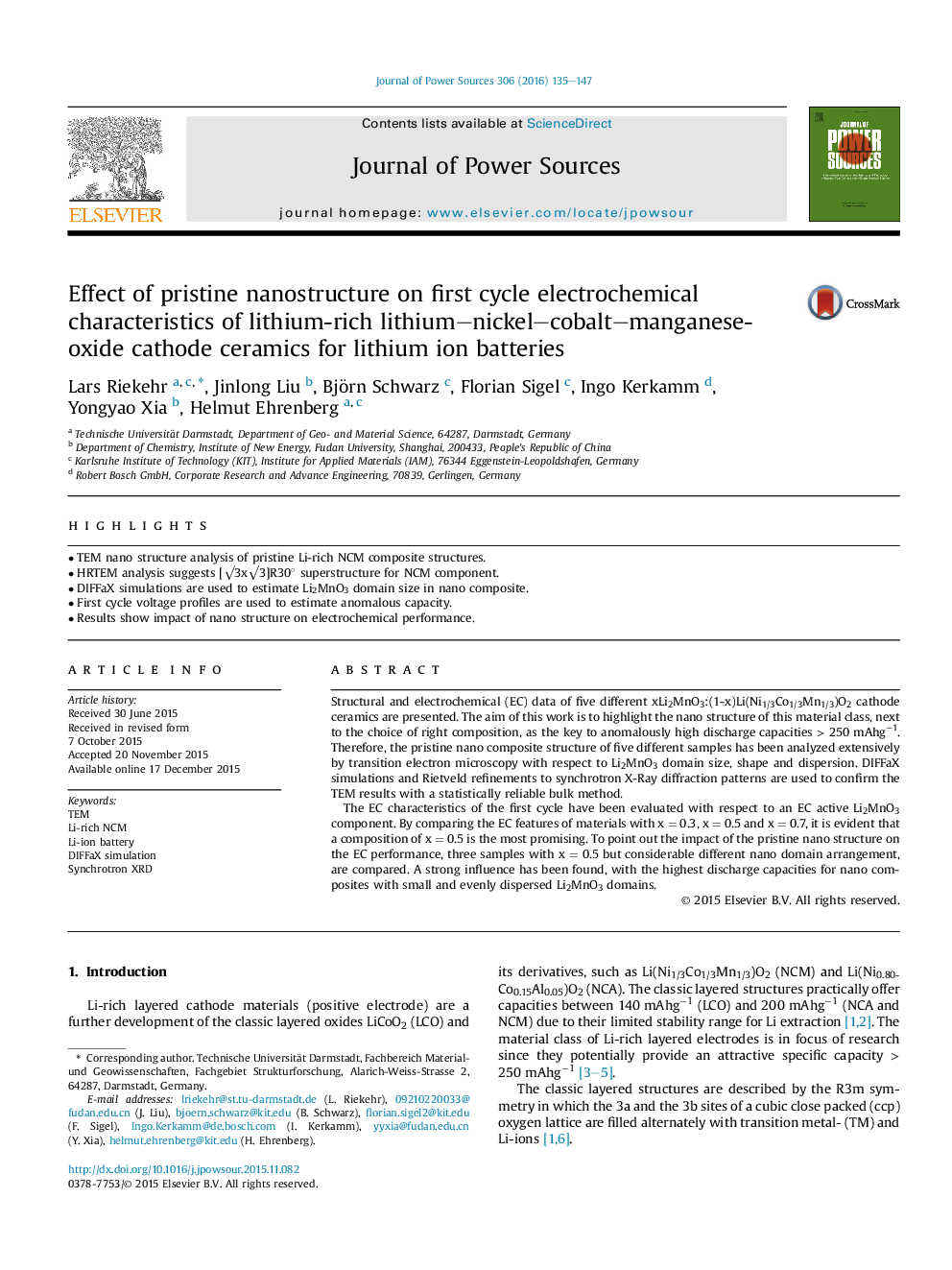| Article ID | Journal | Published Year | Pages | File Type |
|---|---|---|---|---|
| 1292363 | Journal of Power Sources | 2016 | 13 Pages |
•TEM nano structure analysis of pristine Li-rich NCM composite structures.•HRTEM analysis suggests [√3x√3]R30° superstructure for NCM component.•DIFFaX simulations are used to estimate Li2MnO3 domain size in nano composite.•First cycle voltage profiles are used to estimate anomalous capacity.•Results show impact of nano structure on electrochemical performance.
Structural and electrochemical (EC) data of five different xLi2MnO3:(1-x)Li(Ni1/3Co1/3Mn1/3)O2 cathode ceramics are presented. The aim of this work is to highlight the nano structure of this material class, next to the choice of right composition, as the key to anomalously high discharge capacities > 250 mAhg−1. Therefore, the pristine nano composite structure of five different samples has been analyzed extensively by transition electron microscopy with respect to Li2MnO3 domain size, shape and dispersion. DIFFaX simulations and Rietveld refinements to synchrotron X-Ray diffraction patterns are used to confirm the TEM results with a statistically reliable bulk method.The EC characteristics of the first cycle have been evaluated with respect to an EC active Li2MnO3 component. By comparing the EC features of materials with x = 0.3, x = 0.5 and x = 0.7, it is evident that a composition of x = 0.5 is the most promising. To point out the impact of the pristine nano structure on the EC performance, three samples with x = 0.5 but considerable different nano domain arrangement, are compared. A strong influence has been found, with the highest discharge capacities for nano composites with small and evenly dispersed Li2MnO3 domains.
